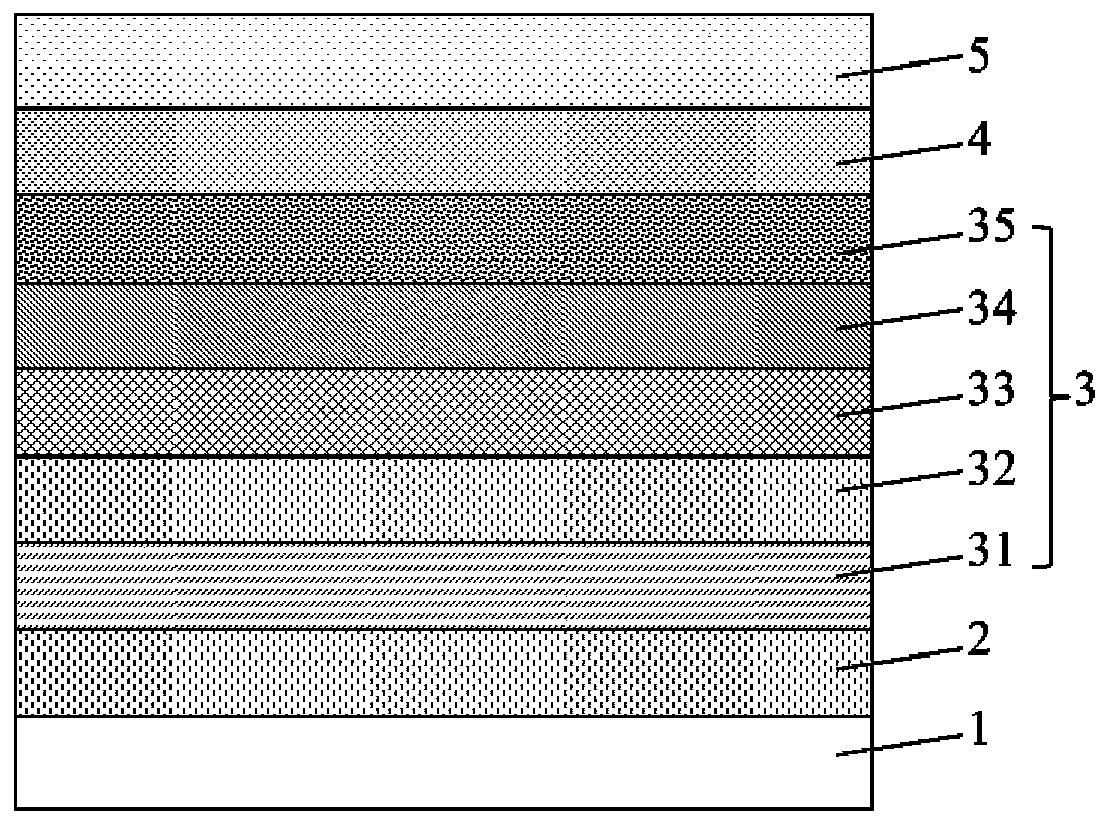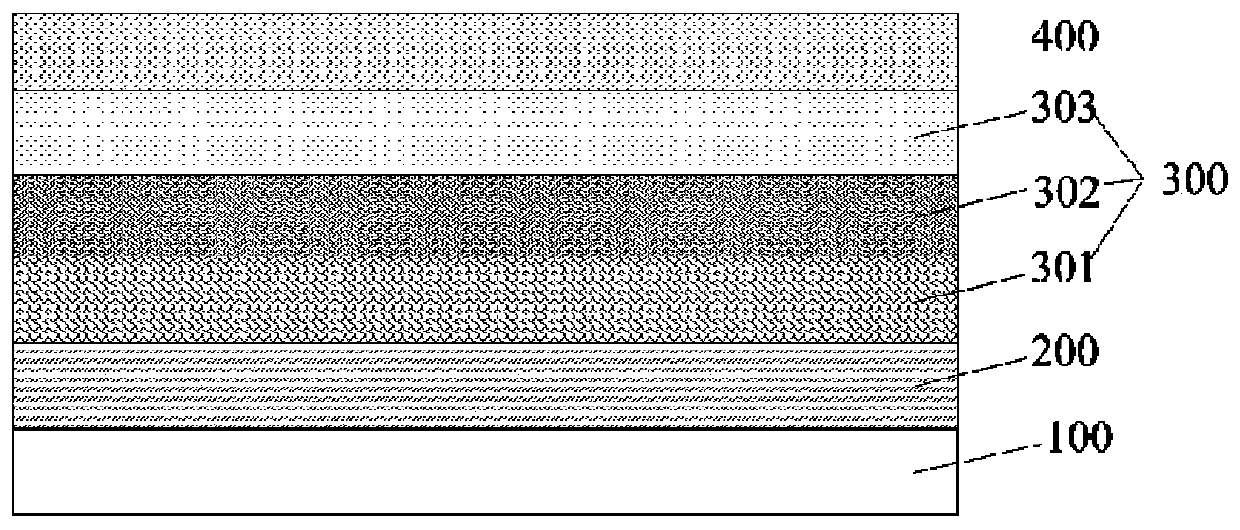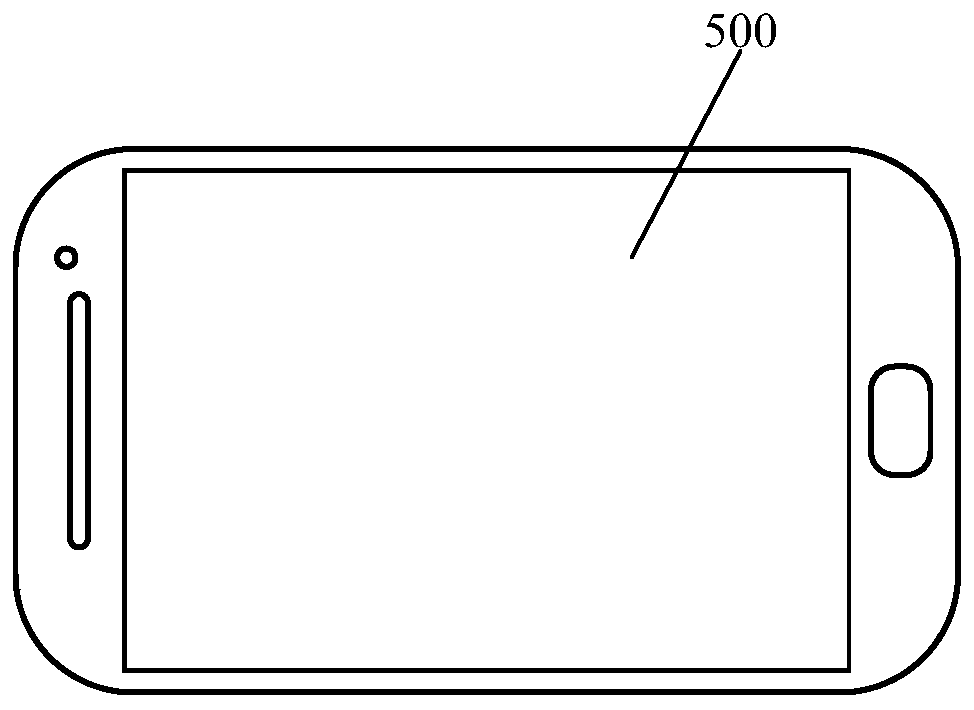Compounds, photoelectric conversion devices and electronic devices
A photoelectric conversion and compound technology, applied in the field of organic materials, can solve the problems of performance degradation of light-emitting devices, increase in operating voltage, decrease in luminous efficiency, etc., and achieve the effect of improving the molecular weight of materials, low driving voltage, and enhancing injection and transmission.
- Summary
- Abstract
- Description
- Claims
- Application Information
AI Technical Summary
Problems solved by technology
Method used
Image
Examples
Embodiment 1
[0201] Anode 1 was prepared by the following process: the thickness of ITO was The ITO substrate (manufactured by Corning) was cut into a size of 40mm (length) × 40mm (width) × 0.7mm (thickness), and it was prepared into a pattern with a cathode 5 overlapping area, an anode 1 and an insulating layer by using a photolithography process. Top emission experimental substrate, using ultraviolet ozone and O 2 :N 2 Plasma was used for surface treatment to increase the work function of the anode 1 (experimental substrate) and to clean the experimental substrate.
[0202] Vacuum-deposit m-MTDATA (4,4',4"-tris(N-3-methylphenyl-N-phenylamino)triphenylamine) on the experimental substrate (anode 1) to form a thickness of The hole injection layer 2 (HIL), and on the hole injection layer 2 vacuum evaporated NPB (N,N'-diphenyl-N,N'-(1-naphthyl)-1,1'-bi benzene-4,4'-diamine) to form a thickness of The hole transport layer 31 (HTL).
[0203] Evaporate TCTA (4,4',4 "-tris(carbazol-9-yl) ...
Embodiment 2~17
[0208] An organic electroluminescent device was fabricated by the same method as in Example 1 except that the compounds shown in Table 1 were each used in forming the electron transport layer 35 (ETL).
PUM
| Property | Measurement | Unit |
|---|---|---|
| electron mobility | aaaaa | aaaaa |
Abstract
Description
Claims
Application Information
 Login to view more
Login to view more - R&D Engineer
- R&D Manager
- IP Professional
- Industry Leading Data Capabilities
- Powerful AI technology
- Patent DNA Extraction
Browse by: Latest US Patents, China's latest patents, Technical Efficacy Thesaurus, Application Domain, Technology Topic.
© 2024 PatSnap. All rights reserved.Legal|Privacy policy|Modern Slavery Act Transparency Statement|Sitemap



